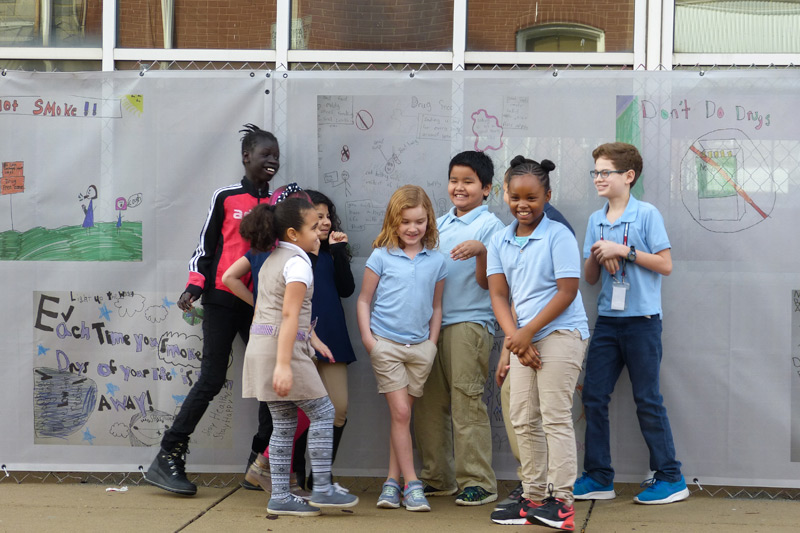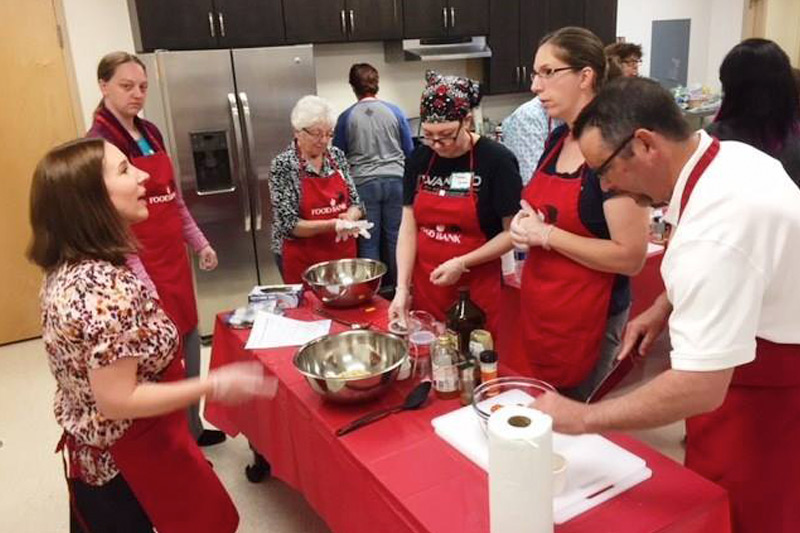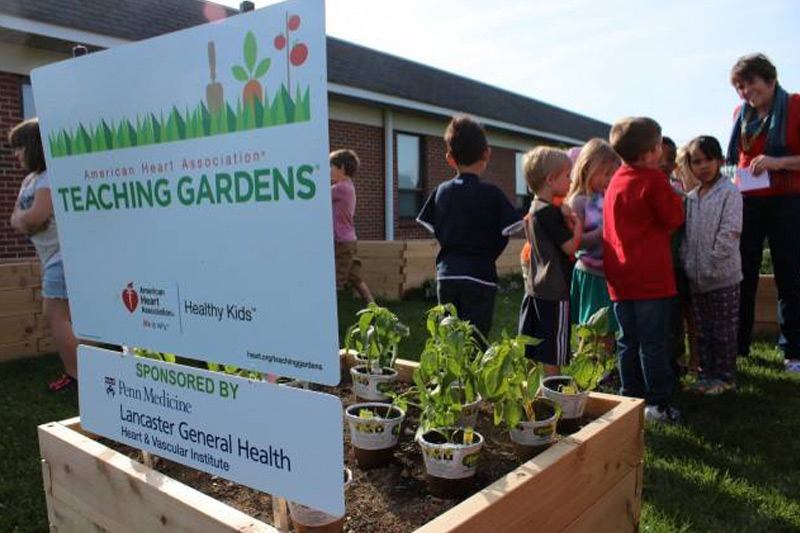Improving Community Health

Ross Elementary School students decorated construction fences at LG Health’s property along Queen and Prince streets. Their murals promoted community health through healthy eating and physical activity-themed artwork.
Penn Medicine Lancaster General Health has always placed an emphasis not only on health care for individuals, but on improving the overall health status of our community. This is the motivating factor behind our 125-year commitment to providing the programs and services that help individuals and communities achieve and maintain health—a commitment that continued and grew in 2018.
We believe that health begins where we live, learn, work and play. Everyone in Lancaster County should have the opportunity to be well and make healthy choices, regardless of their income, education or background.

LG Health joined the Central PA Food Bank for an educational session to help local food pantries provide healthier meal options to their customers.
In 2018, Penn Medicine Lancaster General Health continued to commit significant resources—over $4 million in addition to staff resources of our Community Health Department—to building the partnerships and coalitions with other organizations that share goals to improve the health and well-being of our community. This includes dozens of other health-related groups, the business community, social service organizations, schools, government and faith-based communities. Efforts to improve the health of individuals or the broader community—by LG Health or any hospital or health system—will be more successful and more sustainable with collaboration with the organizations that make up the fabric of our community.

Lancaster General Health’s Heart and Vascular Institute teamed up with Lighten Up Lancaster County to increase access to fresh produce for area residents.
Throughout the year, these partnerships proved powerful as, working together, we touched thousands of lives throughout the County with programs, services and systems. These initiatives filled gaps in access to care, enhanced mental health, reduced substance use, increased health screenings, education, physical activity and nutrition and improved social and familial environments.
